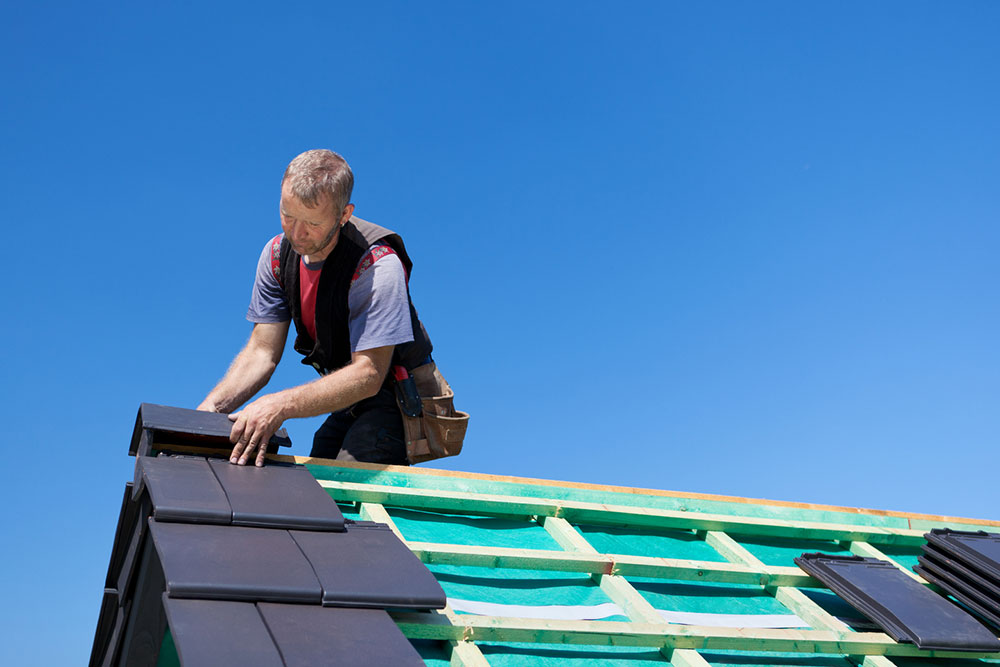6 most common roofing mistakes to avoid

Roofing projects are complex, so they are better left to the pros. When a roof is not fixed or repaired correctly, it can risk extensive damage to the whole property and take away the house’s curb appeal. Furthermore, improper installation can lead to concerns like higher utility bills, ventilation errors, and dry rot. If a person still wants to go ahead and undertake the roofing project, they should avoid these six common mistakes.
Placing new asphalt over the old layer
Placing new asphalt over the previous layer is a big roofing mistake people should avoid when working on renovation plans. New over old might work out well for certain roofing systems, but it is usually the wrong way. Placing new asphalt over the old layer is illegal in some places and more expensive. When installers do this, they risk missing a problem in the old roof, which could lead to higher repair and replacement costs later. Additionally, this practice can lead to the roof structure shouldering more burden than it was designed to. So, individuals should first get the roof inspected and avoid applying a new asphalt layer over the old one.
Installing a slate roof without researching
While a slate roof demands little to no maintenance, replacing it can be tricky. Slate tiles are made using a naturally occurring material called slate. So, when some of these tiles need to be changed, it is hard to find replacements of the same color. Some installers decide to use mismatched slates to save time, which results in roof slates appearing spotty and uneven. Some professionals intentionally mismatch roof slates to give the roof a unique look. So, individuals who want their roof to appear uniform should avoid installing a slate roof or consider getting non-fading roofing slates.
Skipping the starter shingles
Starter shingles or starter strips are the initial layer of shingles laid right at the roofline’s edge. They help stop rainwater or the water from melted snow from making its way in. When starter shingles are not placed properly, the water can seep into the ceiling, enter the property, and lead to many unwanted problems. Some roof installers skip the starter shingles to speed up the job or save some money. In either case, this mistake increases repair and maintenance costs and forces one to replace the roof sooner than expected.
Incorrect nailing
Nailing the shingles incorrectly is a major roofing mistake people must avoid when undertaking a home renovation. Many individuals choose shorter nails, thinking they will be sufficient for the job. However, shorter nails might not penetrate the roof layers properly, letting the shingles shift and displace. Similarly, if the nails are not driven in the shingles, the wind can allow rainwater to seep in, or the exposed nails can easily be raised along with the shingles when heavy wind blows. These and multiple other problems make it imperative to use the right nails during roofing and insert them in the right places.
Not consulting experts
Roof installation is complex, and any mistake can gravely affect the property. Every manufacturer provides extensive details regarding how their roofs should be handled and installed. This includes the right technique, use of equipment, number of nails required, shingle alignment, and other details. Since executing the instructions can be hard, one should speak to an expert before beginning the project. Besides putting the house at risk of damage, DIY-ing roofs could void the available warranty. This means one will have to pay for any roof damages out of their own pocket.
Ignoring contractor insurance
When selecting a roofing company to work on the proposed renovation plans, individuals should look for someone who is insured. Insurance gives homeowners peace of mind and reassures them that they are working with reputed professionals. When a contractor does not have proper insurance, the property owner is held responsible for anything that goes wrong. In other words, the property owner will have to pay for any injury the roof installers suffer or any damage the property incurs. Sure, finding a good contractor with insurance can take time, but it can help save hundreds and even thousands of dollars in the long run. So, individuals should never skip this step.

